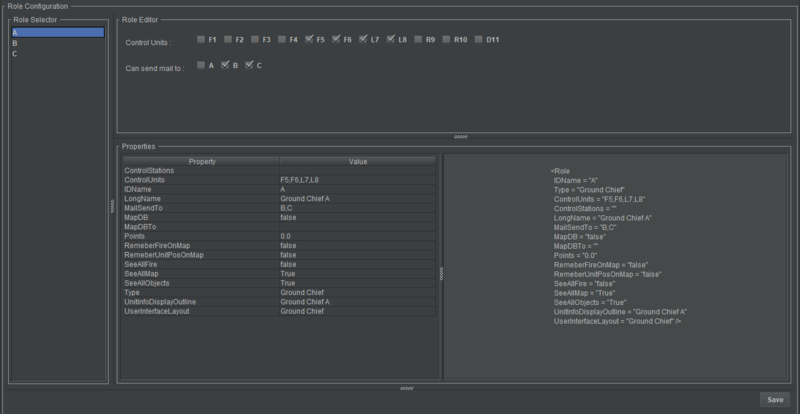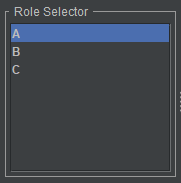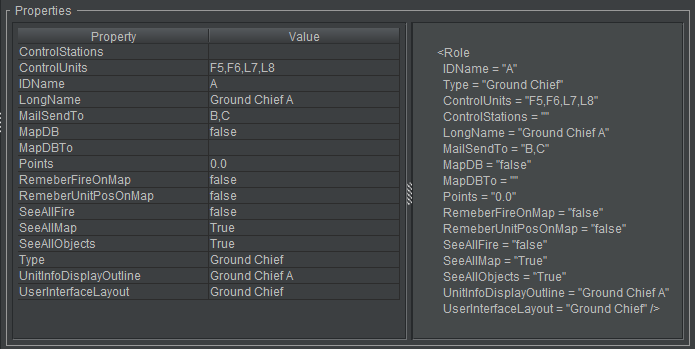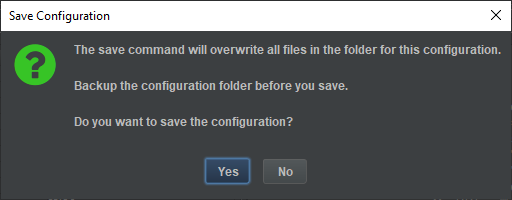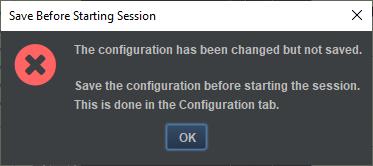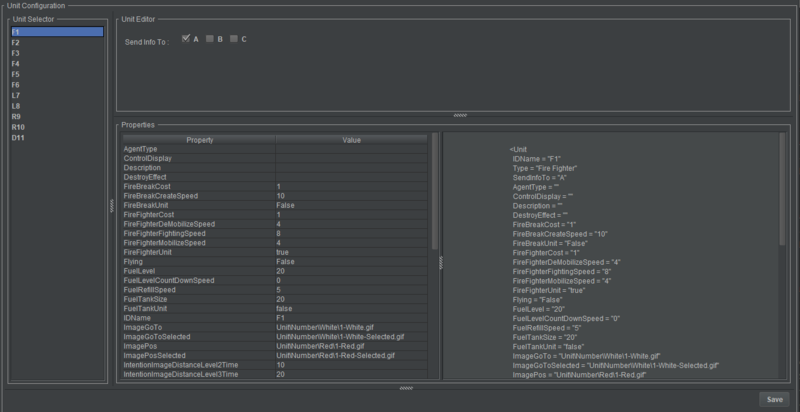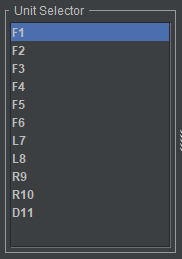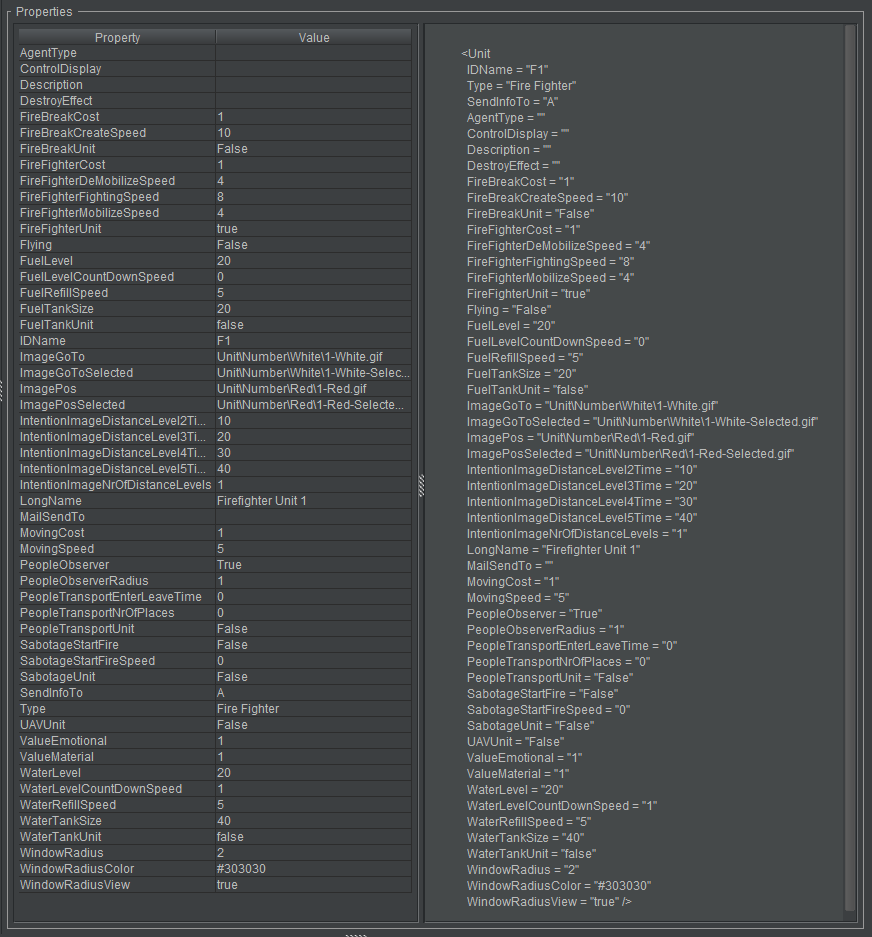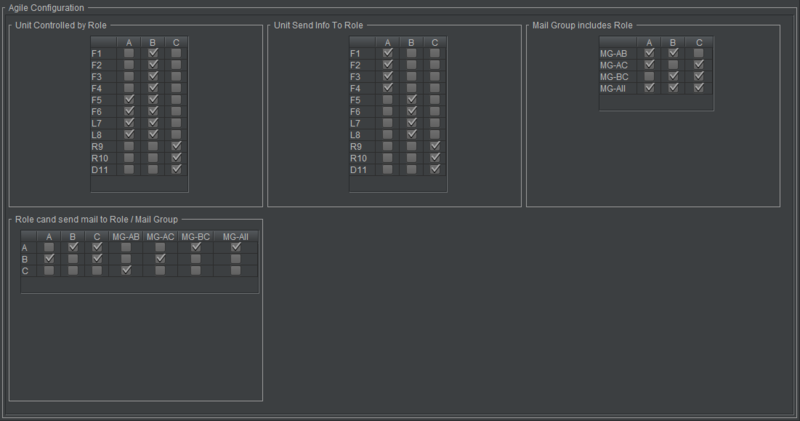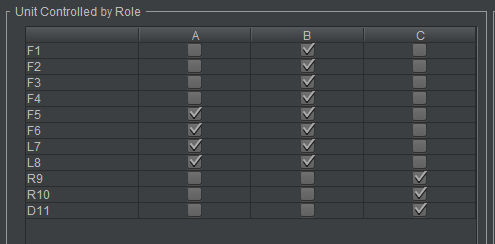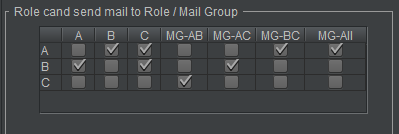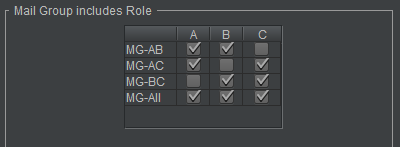Agile Organization
Pre session configuration
Role configuration
The role configuration window contains four panels.
- Role selector: Select which Role to edit
- Role editor: Edit Role configuration
- Property viewer: View all properties for the Role.
- XML viewer: View the xml configuration for the Role.
More information can be found at Role Configuration.
- Role Selector
Select which Role to edit.
- Role editor
Edit Role configuration:
- Select which Units the Role can control.
- Select which Roles and Mail Groups the Role can send mail to and chat with.
- Property and XML viewers
These panels display Role configuration properties, which update as they are edited in the panels above.
- Save configuration
Clicking the Save button will generate the following dialog box:
Clicking Yes will save changes to the configuration (.con and .coni) files in the relevant configuration folder.
If Save is not clicked and the user clicks Start (in the Session Control panel in the Play tab), the following dialog box appears:
- After starting a C3Fire session
The Role Configuration and Unit Configuration buttons are inactive. Only the Agile Configuration button is available in the Configuration tab.
Unit configuration
Unit Configuration contains four panels.
- Unit selector: Select which Unit to edit.
- Unit editor: Edit Unit configuration.
- Property viewer: View all properties for the Unit.
- XML viewer: View the xml configuration for the Unit.
More information about Unit configuration can be found at Unit Configuration.
- Unit Selector
Select which Unit to edit.
- Unit editor
Edit Unit configuration:
- Which Roles the selected Unit sends information (within its observation area) to.
- Property and XML viewers
- These panels display Unit configuration properties.
- Save Configuration
Organizational change during a session
With these panels the Manager is able to change the organization during a session by changing Role, Unit and Mail Group configurations.
Agile Configuration contains four panels.
- Role control unit: Which Units each Role can control.
- Unit send information to role: Which Roles each Unit will send the information (within their observation areas) to.
- Role can send mail to role: Which Roles and Mail Groups each Role can send mail to and chat with.
- Mail group membership: Which Roles are members of each Mail Group.
Role control unit
Which Units each Role can control.
Unit send information to role
Which Roles each Unit will send the information (within their observation areas) to.
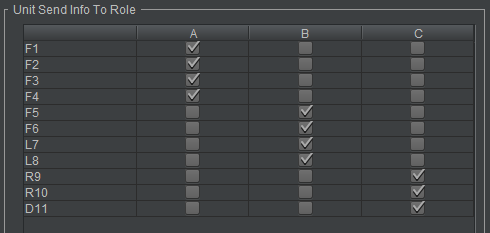
Role can send mail to role
Which Roles and Mail Groups each Role can send mail to and chat with.
Mail Groups
It is possible to create Mail Groups. This is done in the <MailGroups> configuration element.
More information about Mail Group configuration can be found at Mail Group Configuration.
- Mail group membership
Which Roles are members of each Mail Group.

